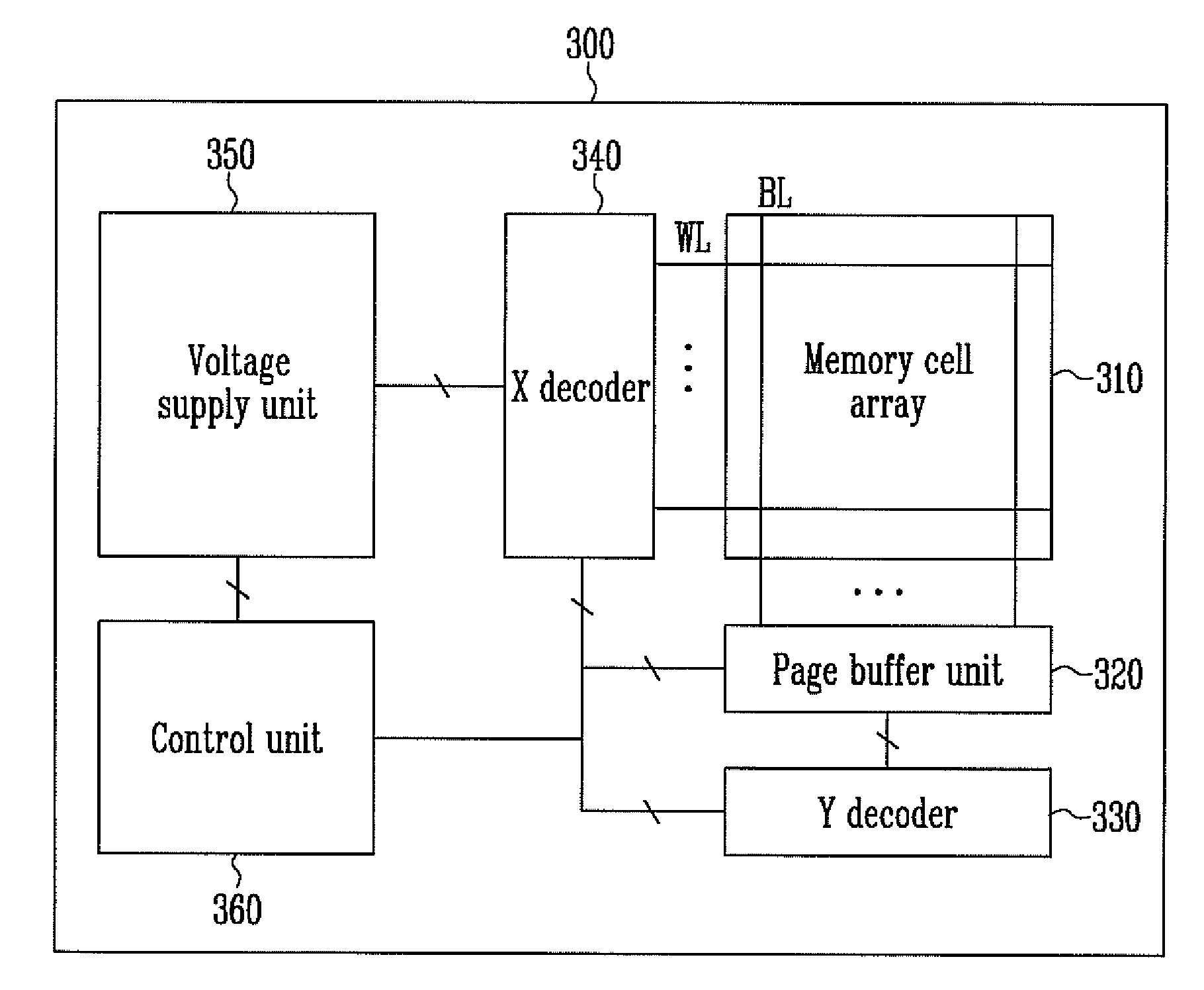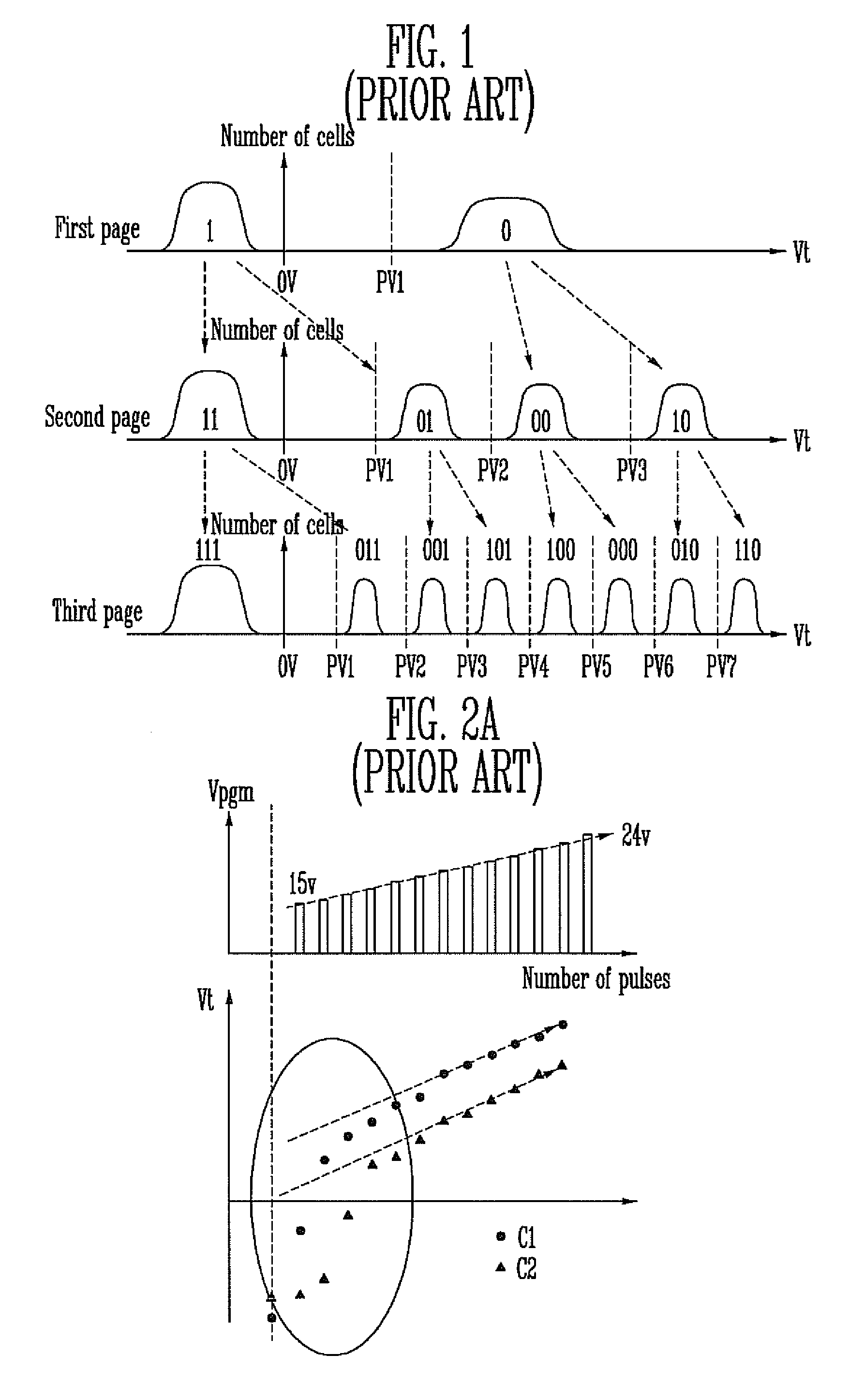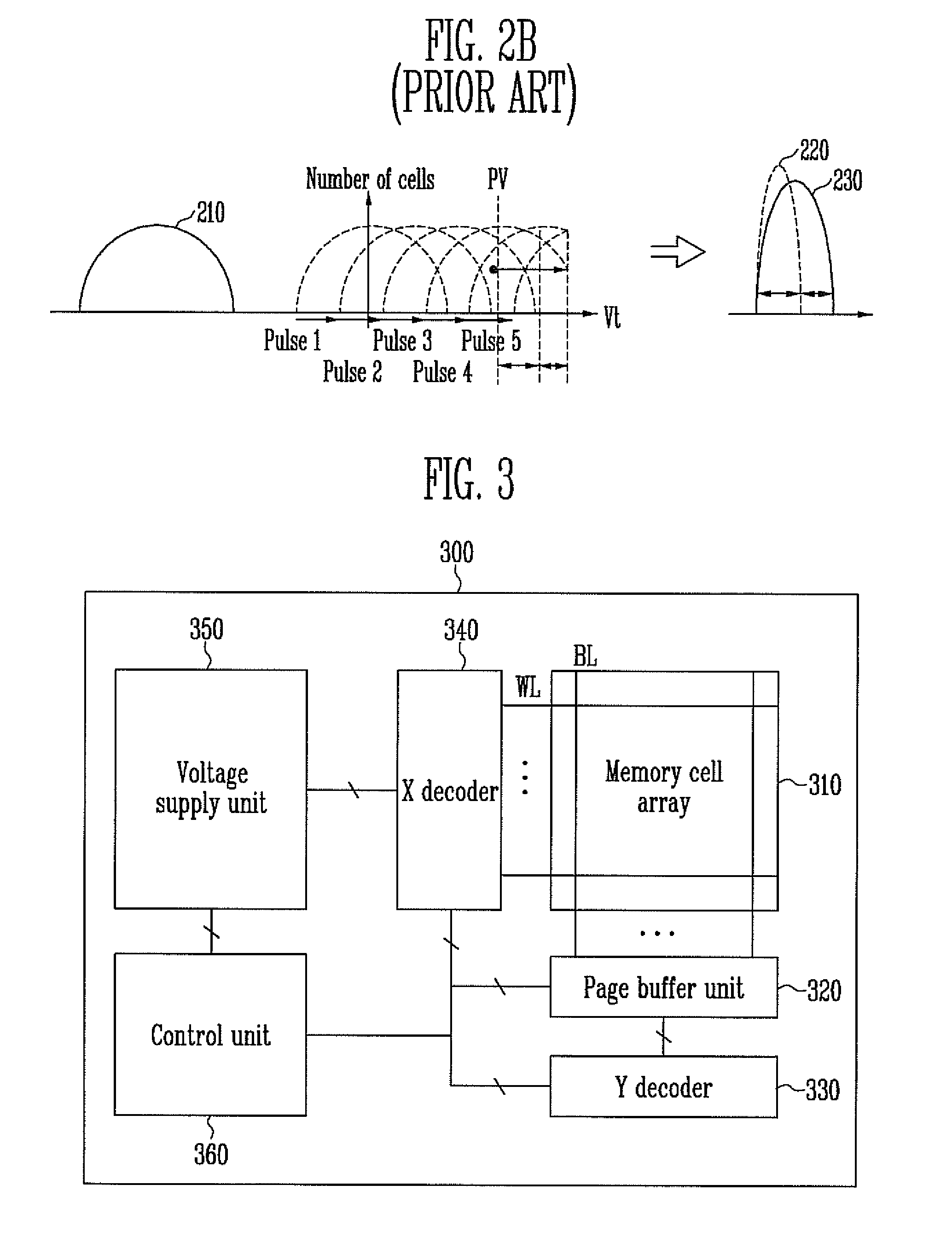Method of programming nonvolatile memory device
a nonvolatile memory and programming technology, applied in the direction of static storage, digital storage, instruments, etc., can solve the problems of irregular increase of the threshold voltage of memory cells, deterioration of data reliability, data is not correctly read in the read operation, etc., and achieve the effect of narrowing the width of the distribution of threshold voltages
- Summary
- Abstract
- Description
- Claims
- Application Information
AI Technical Summary
Benefits of technology
Problems solved by technology
Method used
Image
Examples
first embodiment
[0060]To solve this problem, in the present invention, the ISPP method can be performed by differently setting step voltage increments.
[0061]FIG. 5A is a diagram illustrating a program method according to a first embodiment of the present invention.
[0062]Referring to FIG. 5A, in the program method according to the first embodiment of the present invention, a step voltage increment is set to 200 mV up to a preset number of program pulses and is subsequently set to 400 mV.
[0063]Assuming that first to eighteenth program pulses are supplied as shown in FIG. 5A, a program voltage is raised by 200 mV increments in response to the first to fourteenth program pulses. The program voltage is raised by 400 mV increments in response to subsequent program pulses.
[0064]In this case, when the distributions of the threshold voltages are classified on the basis of the first to third verification voltages PV1 to PV3, memory cells programmed to have threshold voltages between the first verification vo...
second embodiment
[0074]A program method according to the present invention is described below.
[0075]FIG. 6A is a diagram illustrating a program method according to the second embodiment of the present invention.
[0076]In the program method according to the second embodiment of the present invention, step voltage increments are differently set according to distributions of the threshold voltages of memory cells to be programmed.
[0077]That is, a step voltage increment for the first and third memory cell groups C1s and C3s is set to 600 mV, and a step voltage increment for the second memory cell group C2s is set to 300 mV.
[0078]In the method of setting different step voltage increments for the memory cell groups, verification operations can be omitted as in the first embodiment of the present invention.
[0079]That is, a program voltage increment is raised by 600 mV in response to the first to third program pulses, and a program voltage increment is raised by 300 mV in response to the fourth to fifteenth ...
third embodiment
[0090]FIG. 7A is a diagram illustrating a program method according to the
[0091]Referring to FIG. 7A, in the program method according to the third embodiment of the present invention, a step voltage increment is basically set to 300 mV. Further, some verification operations are omitted in order to set different step voltage increments for the first to third memory cell groups C1s to C3s.
[0092]At an early stage, a program voltage raised by 300 mV increments is supplied to the first and third memory cell groups C1s, C3s. After some program pulses have been supplied, the program voltage for the first and third memory cell groups C1s and C3s is raised by 600 mV. Furthermore, a program voltage for the second memory cell group C2s is raised by 300 mV.
[0093]To this end, the first verification operation using the first verification voltage PV1 is performed on the first memory cell group C1s in response to each of the first to seventh program pulses. Subsequently, the first verification oper...
PUM
 Login to View More
Login to View More Abstract
Description
Claims
Application Information
 Login to View More
Login to View More - R&D
- Intellectual Property
- Life Sciences
- Materials
- Tech Scout
- Unparalleled Data Quality
- Higher Quality Content
- 60% Fewer Hallucinations
Browse by: Latest US Patents, China's latest patents, Technical Efficacy Thesaurus, Application Domain, Technology Topic, Popular Technical Reports.
© 2025 PatSnap. All rights reserved.Legal|Privacy policy|Modern Slavery Act Transparency Statement|Sitemap|About US| Contact US: help@patsnap.com



